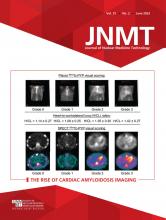Abstract
Gastrosplenic fistula is a rare complication arising mainly secondary to involvement of the stomach or spleen by lymphoma. A delayed diagnosis is associated with high morbidity and mortality. We present a case of gastrosplenic fistula secondary to gastric and splenic involvement by diffuse large B-cell lymphoma with relevant imaging findings. The patient was successfully treated with surgical resection.
Gastrosplenic fistula is an uncommon but potentially fatal complication of various etiologies. Lymphoma of the stomach and/or spleen has been reported as a cause of gastrosplenic fistula, which usually requires surgical intervention. We present a case of gastrosplenic fistula secondary to gastric and splenic involvement by diffuse large B-cell lymphoma.
CASE REPORT
A middle-aged patient presented to the emergency department after a syncopal episode on standing and subsequent hematemesis. He had a history of drenching night sweats, fever, fatigue, and intermittent abdominal pain for a month and weight loss of 25 pounds over 2 mo. A CT angiogram of the abdomen and pelvis demonstrated thickening of the gastric body and fundus wall, splenic enlargement, loss of the fat plane between the stomach and spleen, and possible splenic artery involvement by the mass. The stomach was distended with hyperdense material, most likely blood. Areas of hypoattenuation were seen in the spleen (Fig. 1A). The patient underwent splenic artery embolization on the same day to control bleeding. Subsequent CT of the abdomen demonstrated extension of oral contrast medium beyond the thickened gastric lumen to the spleen, suggestive of a gastrosplenic fistula (Fig. 1B). Subsequent 18F-FDG PET/CT demonstrated intensely 18F-FDG–avid masslike thickening of the proximal stomach wall, concerning for gastric involvement of disease (Fig. 2). This finding was contiguous with an enlarged spleen with loss of the fat plane. The spleen, measuring 18.8 cm in craniocaudal diameter, displayed heterogeneous intense 18F-FDG uptake, large photopenic defects, and collections of fluid and locules of air. These findings suggested splenic involvement of disease, gastrosplenic fistulation, possible splenic abscess or necrosis, and sequela of embolization. There was 18F-FDG–avid multistation adenopathy above and below the diaphragm, as well as diffuse intense 18F-FDG uptake within bone marrow. However, bone marrow biopsy results were not available. Cervical lymph node sampling revealed diffuse large B-cell lymphoma of the germinal center and double-expressor phenotype, with a Ki-67 proliferation index of approximately 90%. Because of presumed risk of infection and hemorrhage, surgical management included splenectomy and en bloc partial gastrectomy and distal pancreatectomy. A fistula was visualized between the gastric fundus and spleen. Surgical pathologic examination was positive for diffuse large B-cell lymphoma of similar histology to the cervical lymph node, involving the stomach, the spleen, and a subset of sampled lymph nodes.
(A) Axial abdominal CT angiogram demonstrates small segment of distal splenic artery (white arrow) approaching necrotic center of spleen (black arrow). (B) Axial abdominal CT image with oral and intravenous contrast media demonstrates extension of oral contrast medium to spleen (arrow).
Axial CT (A) and PET/CT (B) images at the same level demonstrate an intensely 18F-FDG–avid mass (blue arrows) involving the stomach and spleen, with areas of central splenic necrosis (white arrow) and small locules of air (black arrow). Coronal PET/CT (C) and maximum intensity projection PET (D) images demonstrate 18F-FDG–avid adenopathy, diffuse intense bone marrow uptake, and an intensely 18F-FDG–avid masslike area involving the stomach and spleen.
DISCUSSION
Gastrosplenic fistula is a rare but potentially fatal complication in malignant and nonmalignant conditions. Some cases of gastrosplenic fistula manifest during treatment for, or as the initial presentation of, lymphoma. The most common reported lymphoma subtype is diffuse large B-cell lymphoma, in approximately 85% of cases (1,2). Gastrosplenic fistula can also occur with gastric adenocarcinoma, gastric sleeve surgery, splenic abscess, gastric ulcer, Crohn disease, and sickle cell disease (3,4). Patients with lymphoma may present with constitutional symptoms including weight loss, abdominal pain, fever, fatigue, and an abdominal mass (1). Gastrosplenic fistula can occur in the setting of lymphomatous involvement of the stomach and spleen and in splenic infarction after treatment. Patients with gastrosplenic fistula may also present initially with hematemesis, melena, or syncope (1). A toxic presentation may indicate the development of splenic abscess. The presence of air bubbles within the spleen on diagnostic imaging may be secondary to splenic abscess or gastrosplenic fistula, and differentiation of these conditions has implications in treatment planning. Demonstration of a fistulous tract or leakage of oral contrast medium beyond the gastric wall margin to the spleen confirms the diagnosis (5). It is of paramount importance that imagers be aware of this entity to help guide clinical management toward timely lifesaving measures.
Primary management for gastrosplenic fistula is surgical, with splenectomy and resection of adjacent diseased stomach (1,2). In cases such as this patient with gastrointestinal bleeding, splenic artery embolization may be used as a bridge to surgery (6). Nonoperative management of gastrosplenic fistula has been described (7) but can be associated with increased risk of bleeding, perforation, infection, and mortality (8).
CONCLUSION
Gastrosplenic fistula is a rare complication of lymphoma. Awareness of this entity can result in earlier diagnosis and decreased patient morbidity and mortality.
DISCLOSURE
No potential conflict of interest relevant to this article was reported.
Footnotes
Published online Jan. 4, 2023.
REFERENCES
- Received for publication August 11, 2022.
- Revision received December 21, 2022.









